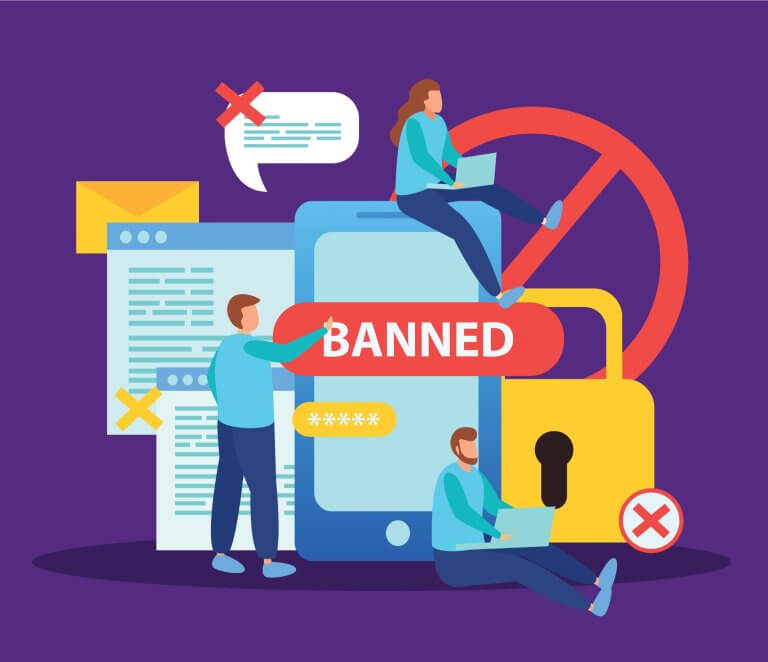Want a heads up when a new story drops? Subscribe here.
The rise of social media has led to a surge in video usage across multiple channels. Today, television is not the only medium through which video reaches global audiences. It is at work, at home, in our pockets, and cell phones through Facebook, YouTube, Instagram, and TikTok.
Besides being easily accessible, video has become an enabler for online users. It is a means for sharing what matters to them, interacting with friends and family, and staying connected. Video is a powerful tool for socializing, entertaining, educating, sharing, and collaborating.
Major brands have been quick to realize and tap into the potential of video as a means to reach online audiences and deliver customer-oriented experiences. Still, many businesses are not using video to their full potential, advantage, and capabilities. They are either not convinced video marketing works or are unsure where to start.
For marketers who are in this boat, here are some real benefits of using video as well as some tried and true techniques to unleash its power and reach global audiences.
Table of Contents
Video Marketing History

Nowadays video marketing is one of the most powerful forms of advertising but how did it get to be what it is today? It was in 2005 that the first video, Me at the Zoo was published on YouTube. Globalized brands such as Sony, Warner and Broz, and Nike were quick to realize the power of video that is broadcast via YouTube. Nike’s 2005 ad showing Ronaldinhio receiving a pair of Golden Boots reached over a million views.
By 2019, video accounted for over 60 percent of all internet traffic (Sandvine 2019), with 57 percent attributable to Microsoft, Amazon, Apple, Facebook, Netflix, and Google (The 2020 Global Internet Phenomena Report). According to Cisco, in 2022 video traffic will account for 82 percent of all Internet traffic, growing fourfold from 2017 to 2022.
Why Is Video So Effective in Video Marketing?

Video is versatile, enabling brands to choose from a variety of formats, filming techniques, and storytelling approaches that work best in delivering their message.
There are different styles to choose from, like motion graphics, whiteboard, animation, and explainer videos. When properly crafted, video captures the emotion, feel, the little details, and the big picture. Video conveys values and meaning without sacrificing style.
Out of all content formats, it is the only medium that can effectively convey visual cues such as eye contact, tone of voice, and body language which are key to evoking emotions and moving audiences.
This is what makes video so effective in digital marketing: it enables brands to create impact beyond words and deliver a message in a way that is evocative, emotional, and memorable.
In a crowded digital landscape, video content is a powerful advertising tool, helping brands to get noticed amidst all the noise. It provides marketers with a versatile, engaging, entertaining, and sharable medium to engage with consumers effectively and consistently.
Video is used incredibly widely for promotion, networking, education, broadcasting, and entertainment. It can tell a story, impart knowledge, amuse, and inspire while positioning a brand’s product or service center stage.
Video Marketing Pros and Cons
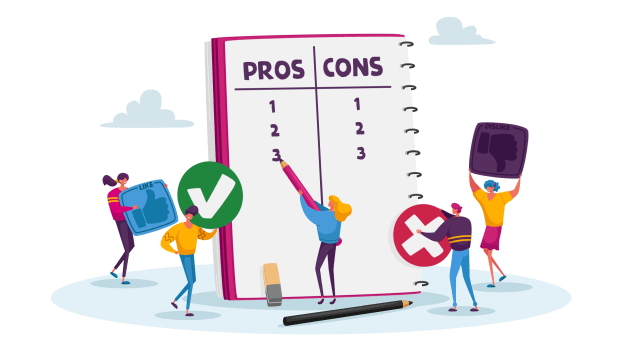
Like other marketing strategies, video marketing also has pros and cons to consider. For one thing, video engages two of our five senses and grabs attention.
According to HubSpot’s Annual State of Marketing Report, 37 percent of users watch video all the way to the end. One reason is that it engages our visual and auditory senses. A single video can include a combination of elements such as sound and music effects, motion graphics, animation, graphs, and charts.
Secondly, video content has high conversion rates, with 93 percent of marketers landing new clients thanks to sharing videos on social media.
Furthermore, after viewing an Instagram story, customers would do one of three things: follow a brand, visit the brand’s website, or visit the Instagram shop (Video Insights for 2020). Added benefits are that video is compatible with mobile, is highly shareable, and can be repurposed in multiple creative ways.
On the other side of the coin, video production can be expensive and time-consuming as it involves multiple processes – pre-production, production, and post-production like audio syncing, coloring, and editing.
Also, not everyone likes videos which is the case with millennials. A study by the Reuters Institute, for example, shows that 41 percent of Millennials find text more convenient than video.
When deciding whether video marketing can maximize the consumer experience, it is important to consider whether viewers want video and is worth the investment.
Additionally, some types of content work well as video while others don’t. Based on the topic and goal, formats that can work well are live broadcasts, interviews, tutorials, and instructional videos.
Video Marketing on the Rise

Video marketing has gained traction over the years and is not showing signs of slowing down. The increased adoption of mobile, higher-quality displays, and the growing usage of social media apps are all drivers of video consumption, helping brands to reach audiences at scale. Additionally, video has become less expensive to create, with a broad range of formats that marketers can use and an ever-increasing number of social media platforms to reach online audiences.
Benefits of Video Marketing in 2022
Video marketing has not lost momentum during the pandemic and will be as essential as ever in a post-Covid world. Video enables brands to take a more touching and personal approach to show customers that “we are all in this together”.
Visual storytelling has the power to engage, trigger emotion, and build community. Right now, as we are dealing with uncertainty through and beyond the crisis, what people need the most is to remain positive and connected.
Types of Video Marketing

There are different styles of video that brands can use for their marketing campaigns, including motion graphics, animation, live-action, and text overlay. They serve different purposes and choosing the right one gives brands the largest reach. Product tutorials and explainer videos, for example, help educate customers while review and testimonial videos are effective as social proof.
Live-Action Video

Live-action videos show real people instead of animation. Common types are live tutorials, product demos, interview case studies, and talking head videos. Whatever the type of live-action, the goal is to convey emotions, show a more human side, and create a sense of purpose.
Talking Head Video

This is a type of interview-style video that showcases an industry expert or instructor against a green screen or blank background. Marketers commonly use talking head videos to exercise thought leadership, promote understanding, highlight the benefits of a product, and offer solutions to problems.
Vlog
 Brands use video-based blogs or vlogs to market new products, share updates and important information, and answer FAQs. Depending on industry or niche, you can choose from educational, motivational, tech, informative, and opinion vlogs. Other examples are reviews and unboxing, challenges, and clickbait.
Brands use video-based blogs or vlogs to market new products, share updates and important information, and answer FAQs. Depending on industry or niche, you can choose from educational, motivational, tech, informative, and opinion vlogs. Other examples are reviews and unboxing, challenges, and clickbait.
Interview Videos
Interview videos offer marketers the chance to show off expertise and step into a leadership role. Things to focus on can be company culture or news, industry trends, best practices, and advice. Interview videos can be shared on social media, by email, and on landing pages.
Animated Video

Used to inform and educate viewers on a visual level, animated videos feature computer-generated effects, illustrations, and drawings. This type of video is often used to represent abstract ideas, communicate new initiatives, showcase success stories, and promote company products. Depending on the purpose, common styles to look into are whiteboard, stop-motion, 2D and 3D, and motion graphic videos.
Text Overlay Video
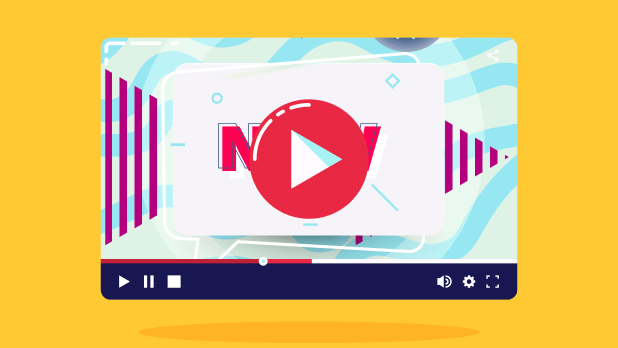
A survey by Publics Media and Verizon Media shows that as much as 92 percent of U.S. viewers watch video silently. Respondents said they were multitasking, waiting in line, didn’t have headphones, or turned off the sound when in a quiet space. Optimizing videos for silent viewing is seen as one solution, complementing still or B-roll images with overlaid text. There are also text-heavy videos with large captions that stand out when viewers scroll.
Live Video (a.k.a. Live Streaming Video)
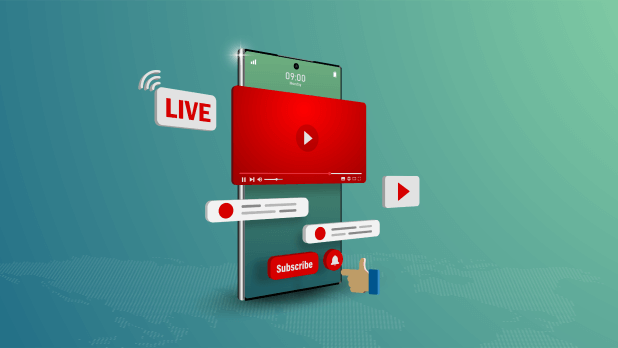
With live streaming, users can watch videos in real-time. Streaming events allows marketers to reach and interact with consumers in a variety of contexts. They can share online classes or webinars, live announcements, product promotions, or other events. An added benefit is that live streaming makes it possible to invite any number of people and maximize the potential for interactions. With physical or in-person events, everyone should be in the same location, and some people might be unable to attend due to travel expenses or work commitments.
360-Degree Video
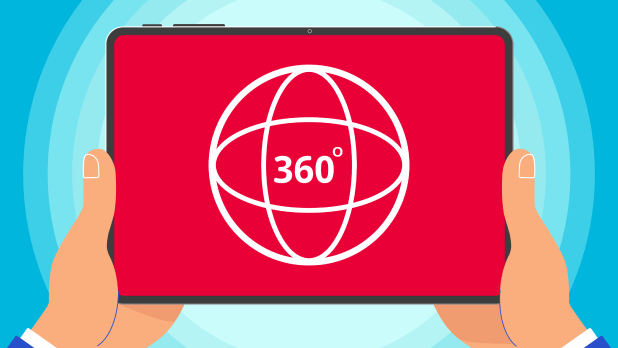
This type of video offers a more engaging and immersive experience by filming in every direction. A video showing everything in the scene can be extremely impactful. More visual and auditory information means better understanding, awareness, and empathy.
Virtual Reality Video (a.k.a. VR Video)

Virtual reality or immersive videos place viewers in the scene and give them a feel of actually being there. VR videos can be viewed via head-mounted displays, smartphones, and personal computers and can be stereoscopic or monoscopic. Mostly filmed in the real world, they can be used in areas such as architecture, live sports, healthcare, and tourism.
Choose-Your-Own-Adventure Video

Also an interactive type of video, this format enables users to choose what happens next in the story they are watching. Assuming the role of the protagonist, the viewer goes on a quest and makes choices that determine the direction of the narrative and the plot’s outcome. Choose-your-own-adventure videos offer a truly immersive experience as users are in control to define their own journey.
Screen Share Videos

A screen share video is basically a recording from a mobile device or computer screen. This style works well for how-to guides, tutorials, and demo videos where brands want to show how a product works or looks.
What Is a Video Marketing Strategy?
A video marketing strategy is a thought-out plan that enables businesses to produce, share, and promote video content that addresses their business objectives.
How to Create a Video Marketing Plan?

When creating a marketing strategy, the first step is to define a target audience by looking at demographics like education, income bracket, occupation, location, age, and gender. Users’ demographics, interests, beliefs, and lifestyles all influence engagement behaviors.
The next step involves setting clear campaign goals which could be driving traffic, improving SEO, increasing customer value, generating leads, etc. Setting clear goals helps marketers figure out what story they want to tell and how to tell it. The four main elements of stories are the protagonist, internal conflict, quest or hero’s journey, and resolution.
Next in the process are finding out where potential customers hang out and choosing the right format and style. Different styles of video to consider can be narrative, mini-documentary, lifestyle, and animation. As a next step, it is important to optimize video content for each channel it is shared on. Finally, metrics such as play rate, view count, social sharing, and engagement rate offer valuable insights that help measure success and optimize future campaigns.
Video Marketing vs. Video Production: What Is the Difference?

Video production is basically the process of making videos, from planning and development to post-production. The pre-production stage involves creating storyboards, writing a script, auditioning talent, etc. Production is when the scenes are shot and video is made. During the post-production stage, you add special effects, credits, and titles, adjust color and sound and add voiceover and music.
Video marketing involves both making and marketing videos to reach different buyer personas and channels. The right type of audience differs based on the goals and results sought, i.e. increasing brand awareness, improving SEO, generating leads, etc. Sharing videos on the right channels is also key to reaching target audiences. This can be social media, video hubs, landing pages, paid ads, and blogs.
Video Marketing for Industries
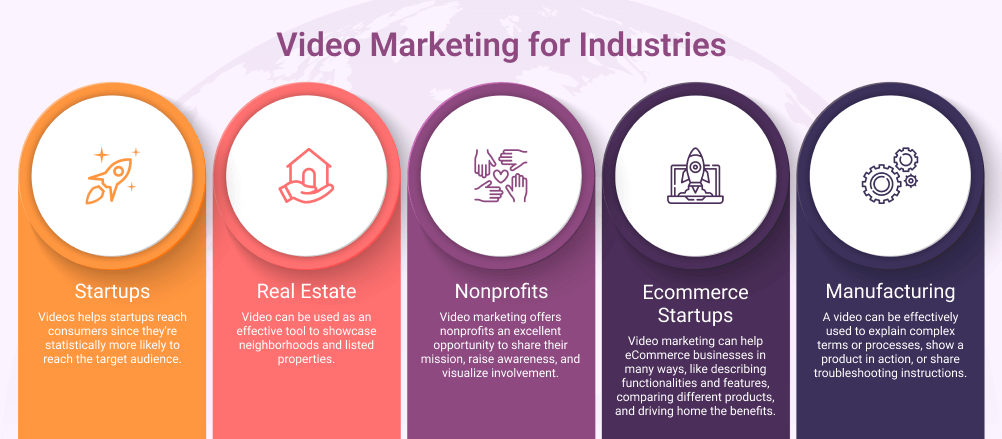
Startups
When it comes to startups, the main goal is to make your business visible to the outer world. Video helps reach consumers because no matter what product or service they are searching for, video is more likely to appear in search results. According to GetStats, videos showing in search results increased by over 75 percent in 2017 alone. In addition to ranking higher in search engine results, video can be tailored to different customer profiles which makes it easier for startups to get noticed by the right audience. Motion or animation videos, for example, are well suited for viewers who need motivation or education while event videos are ideal for targeting professionals seeking opportunities for personal development.
Real Estate
Video can be used as an effective tool to showcase neighborhoods and listed properties. It can help realtors to make connections with buyers and sellers and sell more properties. There are plenty of other ways estate agents can put video to good use, like featuring properties on the market or properties just sold, offering in-depth guided tours, or sharing testimonials from sellers and buyers.
Nonprofits
Video marketing offers nonprofits an excellent opportunity to share their mission, raise awareness, and visualize involvement. Nonprofits can use videos to explain the need behind a campaign, share inspiring stories, introduce their team, or thank donors. Depending on the goal, this can be done by sharing interviews with staff or community members, testimonials from beneficiaries, behind-the-scenes videos, etc.
Ecommerce Startups
Video marketing can help eCommerce businesses in many ways, like describing functionalities and features, comparing different products, and driving home the benefits. Video formats that work well are product tutorials, customer reviews and testimonials, product overviews and close-ups, and messages from the Founder/SEO.
Manufacturing
More and more manufacturers now use video to showcase technical teams and experts describing products and processes on camera. A video can be effectively used to explain complex terms or processes, show a product in action, or share troubleshooting instructions. Common formats that manufacturing businesses use are demo, how-to, and explainer videos.
🔥 Tip: Hundreds of growing businesses use Socialfix to create their video marketing strategy and showcase their products and services.
Video Marketing for SPECIFIC GOALS: Why Are You Doing Video Marketing?

The video marketing funnel is a digital marketing model designed to move users from being a prospect to becoming a repeat customers. The funnel is made of three stages: top, bottom, and retention.
There are two main goals at the top of the funnel: the first is to reach out to prospects and the second is to build awareness. Videos that work well here include problem/solution, educational, corporate/brand, and animated explainers.
Bottom-of-fuel videos aim to convert invested audiences through proof. Content formats that work best at this stage are tips and tricks, products, and how-to or instructional videos. Other types of decision-stage content you can use, are success stories, product comparisons, and industry news-related content such as trends and analysis.
In the retention stage, the goal is to keep customers from losing interest and switching to a different product or brand. Here there are various options for improving retention such as feature announcements, product releases, and company culture videos.
Video Marketing on Social Platforms
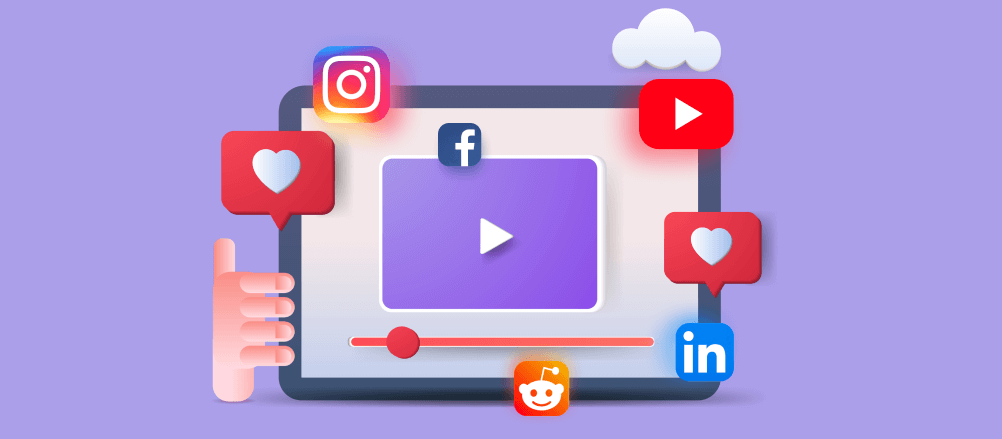
There is no denying that video is the most popular form of content across channels. A HubSpot survey, for instance, shows that 53 percent of respondents want to see more videos in the future, compared to 46 percent for news articles, 44 percent for social media posts, and just 9 percent for podcasts.
Younger generations prefer video and social content while older consumers stick to email and textual content. Across all age groups, however, respondents agree that branded videos are more memorable than branded written and photo content.
Video has also grown in popularity across all social media platforms. Limelight’s State of Online Video 2019 report, for example, shows that users spend 6 hours 48 minutes watching videos on a weekly basis, up by 59 percent since 2016. And that’s even before the global health crisis started.
A 2020 survey reveals that 61 percent of Millennials and Gen Z users are watching more videos via apps like Instagram Explore and Snapchat Discover.
And according to Think with Google, video content can be “a wellspring of positivity” during times of crisis and tragedy.As the new normal is uncharted territory for us, video on social media can be a powerful tool for creating a sense of connection, purpose, and safety.
Video Marketing on LinkedIn
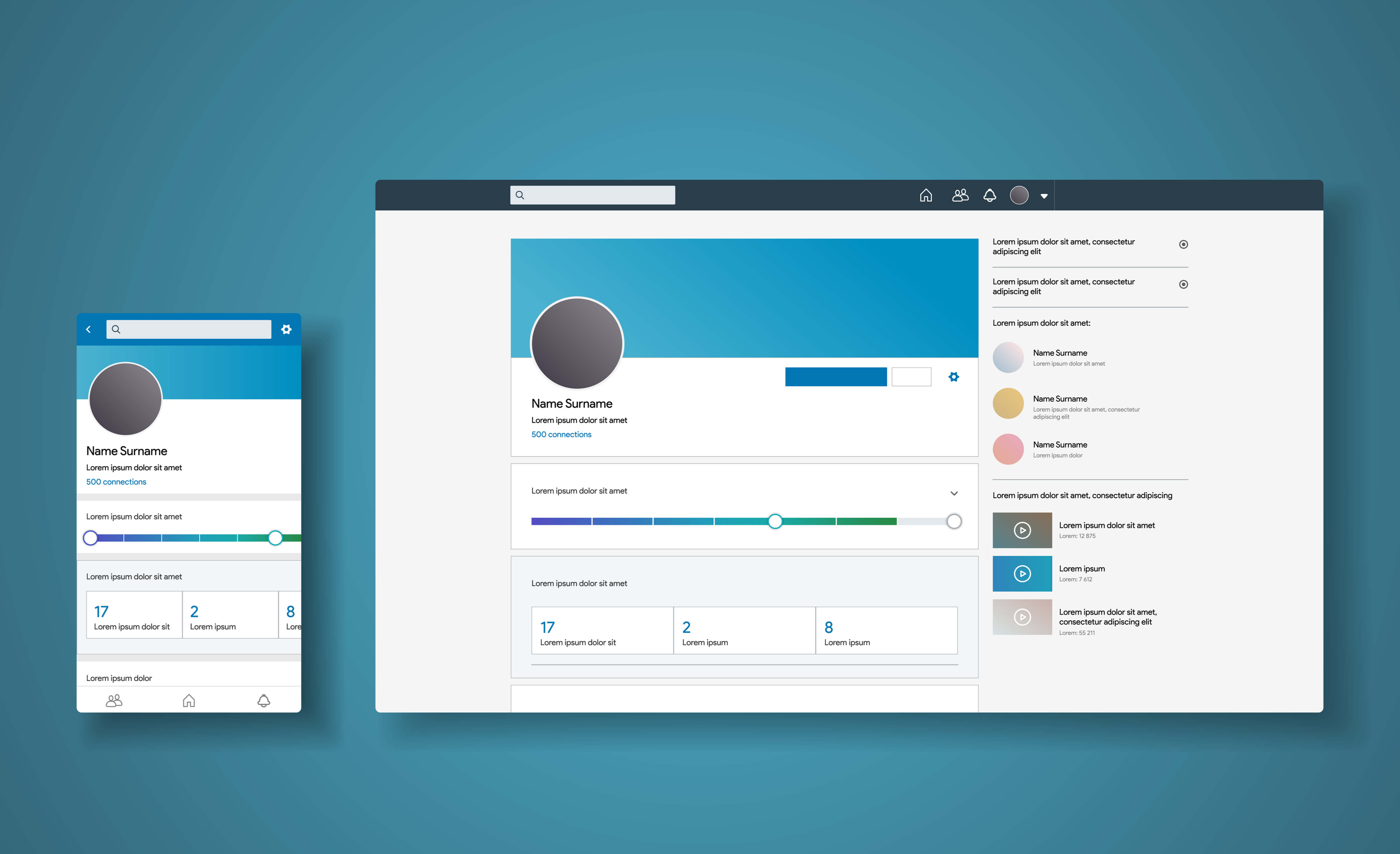
Video marketing on LinkedIn can help businesses communicate their brand message, reach wider audiences, and increase engagement. Branded content that does well on LinkedIn includes:
- Customer stories
- Product launches
- Product features
- Behind the scenes
- Workshops and training
- Company culture
- Events
- Q&A
- Company news and updates
LinkedIn Video Marketing Strategies
When it comes to promotion strategies, it should be kept in mind that the platform is designed for and used by professionals and businesses. This makes keeping video informative, short, and to the point all the more important. Also, video should be optimized for mobile viewing as 80 percent of LinkedIn users engage with content from mobile (LinkedIn Content Marketing Tactical Plan).
In addition to optimizing for mobile, videos should also be optimized for the LinkedIn Feed. Good ways to do this are to create a square video, add captions and subtitles, and create visually appealing thumbnails. Video can be square, horizontal, or vertical but square video works best as it fills the entire screen.
LinkedIn Video Marketing Best Practices

First and foremost, it is important to deliver quality content that is relatable, informative, and easy to follow. What LinkedIn users want to see from brands is that they share expertise, exercise thought leadership, and support their skill and career development.
As the devil is in the details, there is more to producing a successful video. The length of the video, for example, depends on the format of choice and your campaign objectives.
For brand awareness and consideration (video views, engagement, website visits), it is best to keep videos under 30 seconds. Ads should be less than 15 seconds. LinkedIn also recommends using visual storytelling, including text, people, and graphics with video, and burning in subtitles.
LinkedIn Video Marketing Challenges and Mistakes
As content strategists, we are trying hard to figure out how to best deliver content to online audiences. Unfortunately, there are some common mistakes that we see marketers making. One such mistake is not optimizing videos for length and format.
Watching any number of videos helps identify the top-performing styles, formats, lengths, etc. In 2021, for example, the most engaging posts were relatable humor, sensational info-tainment, data-driven perspective, and challenging conventional wisdom posts (HubSpot).
Sharing YouTube-hosted videos is also a common mistake that marketers make. Besides the fact they don’t autoplay, clicking YouTube videos takes visitors to a different website. It is better to share videos directly on LinkedIn as it results in more shares, interaction, and engagement.
Other mistakes to avoid are ignoring feedback, overpromotion, inactivity, and inadequate posting or overall strategies.
Leveraging LinkedIn Influencers

Influencers undoubtedly provide huge opportunities for brands looking to grow their business. This is especially true for B2B businesses as LinkedIn influencers have the power to sway decision-making. They are often followed by CMOs, CFOs, CEOs, and their teams – precisely the type of people that brands want to reach out to.
LinkedIn influencers are often top-level experts, business owners, and CEOs themselves. That is why any collaboration needs to be focused on offering followers something of value. Content that B2B customers find valuable includes case studies (47 percent), webinars (39 percent), third-party/analyst reports (35 percent), and user reviews (32 percent). Content types that are least likely to influence decision-making are infographics (24 percent) and blog posts (24percent) (Demand Gen Report).
LinkedIn Influencers and Problems That May Arise
Like other social media, LinkedIn is also experiencing problems with fake profiles. In many cases, they use information from other profiles, including summaries and photos, in an attempt to look legitimate and genuine.
And while there are always risks when collaborating with someone you don’t know well, connecting with a fake profile could give fraudsters access to your personal and company contacts, history, and other important information.
Video Marketingon Facebook

We know that Facebook loves videos which is why they perform better than other types of content. According to Social Bakers, videos get 135 percent greater organic reach than posts with a photo. This can be a big advantage for marketers looking to engage with online audiences.
While supporting meaningful social interactions is Facebook’s #1 priority, video content seems to be an exception. Not only is engagement high but Facebook Watch, the platform’s streaming service, has already topped 1.25 billion monthly users (Variety). With an opportunity like no other, YouTube video marketing has become a brand’s extremely powerful ally.
Facebook Video Marketing Strategies
To begin with, some types of video content work better than others when it comes to views, engagement, and retention. Examples are tutorials, behind-the-scenes, product showcases, presentations, and event recaps. Using a mix of different videos could be the recipe for success as some viewers will be attracted to how-to videos while others want to see more user-generated content.
Regardless of type, creating a compelling first 5 – 10 seconds is the best way to hook viewers. But unlike LinkedIn, Facebook users favor longer videos, so depending on format, the optimal length seems to be 2 – 5 minutes.
Facebook Video Marketing Best Practices

Setting clear campaign objectives for each stage of the marketing funnel helps reach the right people with the right message. During the awareness stage, the main goal is to increase brand awareness and reach as many people as possible. Popular formats that work well at this stage are entertaining, inspirational, educational, and explainer videos.
The next stage is a consideration and the main campaign objectives should be lead generation, video views, app installs, engagement, traffic, and messages. There are different types of content to use in the middle of the funnel, like culture/about us videos, testimonials and case studies, and service or product videos.
Bottom-of-funnel content should be aimed at more conversions, store traffic, and catalog sales. Examples of content geared toward converting more customers are demonstration, instructional, FAQ, and personalized videos.
Regardless of what stage of the funnel your campaign is in, the main goal should be to get users to stop scrolling. This can be done by solving a common problem, asking an important question, using humor/comedy, etc.
Facebook Video Marketing Challenges

With about 2.91 billion monthly active users, video marketing offers huge opportunities but still has its challenges. The main challenges that brands face are sharing impactful videos, keeping Facebook groups active, targeting the right customers, and moderating comments. All too often, marketers end up targeting people who are either not interested or would buy the product anyway.
There are different ways to go about this, like creating a core, custom, and lookalike audience. Core audiences are based on demographic data such as interests, lifestyle, and geography, custom audiences include engaged users, while lookalike audiences share common characteristics or interests with existing customers.
Keeping Facebook groups engaged and active often takes a lot of time and effort. Luckily, there are high-performing tactics that marketers can use, for example, posting surveys, polls, and quizzes, recognizing top contributors every month or week, posting photo quotes, etc.
Examples of Brands Doing Facebook Video Marketing Right
There are some excellent examples of brands that are ruling the video marketing world. UNICEF’s Unfairy Tales: The Story of Ivine and Pillow is a prime example and a heartbreaking video telling the stories of child refugees. The video is meant to shape positive perceptions toward the many people on the move each year.
#LoveAtFirst Taste by Knorr is also an excellent video that connects food with human emotions. Not only does food bring families together as a way to stay connected but it helps people find love.
Examples of Brands Making Mistakes with Facebook Video Marketing
Even big brands have embarrassing slip-ups occasionally but there are mistakes that can really annoy people. Take for example Topbrowserbasedgames.com’ Males Only Game ad which implies that a game has been designed with a specific gender in mind.
Walmart’s Be Ready for Thanksgiving ad is also a point in question. While there is nothing wrong with the ad per se, it was shown to users who selected they were vegetarian (AdQuadrant).
Facebook Influencers and How to Leverage Them
It has become increasingly challenging to reach customers on Facebook, with an average organic reach rate of just 5.20 percent (HootSuite). The two choices that brands are left with are influencer marketing and paid to advertise. Brands with significant budgets can afford both. Influencer marketing, on the other hand, can be leveraged by businesses of all sizes.
Regardless of business size, planning is at the heart of any successful project. The first step involves setting clear, measurable goals and key performance indicators (KPIs). The latter can be anything, including referral traffic, click-through rate, social engagement, or sales.
The next step is to find an influencer to pair up with. The main factors to take into account are engagement rates, audience demographics, focus or expertise, and the type of content they are known for producing.
The third step is to discuss creative strategies and content such as giveaways, video contests, standing up for a cause, etc. Other types of marketing campaigns to consider are brand ambassador programs, unboxing and reviews, and pre-release campaigns.
Facebook Influencers and Problems That May Arise
Like other strategies, influencer marketing has its own limitations, drawbacks, and risks, and fraud is one of them. Fake influencers look like real ones but they can bring a lot of damage and can be difficult to spot. Signs to watch for are spikes in follower count, unusual follower-to-engagement ratio, low-quality content, no comments, and lots of likes.
Video Marketing on Instagram

Instagram is indeed a powerful medium for video storytelling, and multiple studies have shown that video performs best on Instagram. A study analyzing 5.4 million posts found that video content receives 49 percent more engagement than images.
As video is Instagram users’ favorite, it is not surprising that brands are constantly experimenting with new styles, editing features, and formats to keep content engaging, impactful, and fresh. With a wide variety of features such as flashy filters, color explosions, and plenty more, marketers are spoilt for choice when it comes to video production.
Instagram Video Marketing Strategies
Having a comprehensive and thought-out strategy is the best way to ensure that your marketing dollars are well spent. The three key elements to focus on are your target audience, content, and promotion. Taking a closer look at demographics is the first step to help you figure out whether Instagram users match your ideal customer profile.
A report by Wibbitz offers some important insights to this end. By gender, 72 percent of users are female and 65 percent are male. Most users are Gen Z (93 percent), followed by Millennials (86 percent), Baby Boomers (69 percent), and Gen X (66 percent). Most people watch videos between 5 pm and 8 pm (15 percent) and between 8 pm and 11 pm (33 percent).
Demographics, lifestyle, and behavior indicators like the ones above can be useful when crafting a video marketing strategy. We all have certain assumptions about customers that we may need to leave out so that we market our products to the right people at the right place.
When it comes to content types, the most popular formats are motivational posts, creative inspiration, news coverage, interviews, behind-the-scenes, and how-to tutorials. Whatever the choice of format, however, the goal of every video is to either inspire, educate, or entertain viewers. This can be done in a great variety of ways such as using a thought-provoking quote, asking a question, or adding powerful statistics.
The third element is promotion and using promoted posts is a good way to get started. Once you get to know your audience, you can target viewers by behaviors, interests, languages, gender, age, specific locations, or lookalike audiences.
Instagram Video Marketing Best Practices

The four main types of Instagram video formats are Lives, Reels, Videos, and Stories, each with its recommended dimensions and specs. For each format it is important to pay attention to specs such as maximum video time and file size, aspect ratio, resolution, and upload when using .MOV and MP4 files.
Remember that content is as important as a format. When creating videos for Instagram, the goal should be to grab attention and establish connections quickly. Choose a captivating title and thumbnail image and add captions and music. Use brand imagery, themes, and colors that can help viewers relate to your brand. Also, consider including scenes with captivating imagery or action and product or front-facing lifestyle shots.
Instagram Video Marketing Challenges
The more an Instagram fan’s base keeps growing, the more issues and bugs marketers have to deal with. Common challenges that brands face are responding to comments, cleaning up followers, and following other people’s accounts.
Responding to comments, for example, can be tricky once you grow a large following. The volume of comments also grows, making it difficult to keep track of and respond quickly. Using tools such as Iconsquare can help solve such problems. It displays all comments and notifies users of all comments they haven’t replied to.
When a brand becomes popular, it can also be hard to track who is following or unfollowing. And while it may not seem like a big issue, you want to keep your list authentic and free of fake followers. Using audience credibility tools helps identify and unfollow such accounts.
Examples of Brands Doing Instagram Video Marketing Right
MTV, Nintendo, Burberry, McDonald’s, and Hugo Boss are all brands that are thriving on Instagram videos. Mcdonald’s, for example, doesn’t have a whole lot of videos but what they do is put food center stage to tell a story.
Hollister, a retail brand by Abercrombie & Fitch Co, does a great job capturing the California dream: stunning beaches and landscapes, sun, surfing, and fun. Shot in beautiful locations, their brand stylist offers style recommendations and updates for fans.
Examples of Brands Making Mistakes with Instagram Video Marketing
Instagram has proven tricky for some brands, especially those that don’t have a lot of visual content. Take Domino’s out-of-focus, blurry pizza shots, for example. They hardly look like something you will want to try. Or videos like How to Dip, which show viewers how to dip like a whooping crane, excavator, and screwdriver.
Instagram Influencers and How to Leverage Them

When looking for Instagram influencers to partner with, the things to keep in mind are authenticity, engagement rate, content quality, reliability, and relevance. To reach your ideal customer, it is also important to collaborate with influencers who have the right type of audience for your brand.
Consider demographics such as gender, age, and location to ensure you have a good match. When looking through profiles, ask yourself whether they are a good fit for your products and brand. Promotions for sportswear and fitness clothing, for example, would look awkward on a parenting influencer’s Instagram profile.
Instagram Influencers and Problems That May Arise
There are a few problems and issues that have become prominent with time, like spotting fraudsters and fake activity and keeping track of influencer campaign performance. Signs that you are dealing with an imposter have copied profile sections, unusually low engagement rates, and poor audience quality.
Keeping track of campaign performance can also be difficult, especially when working across niches or with two or more influencers. What you can do is ask influencers to keep you posted when they produce and share content. It also helps to create an Excel spreadsheet where you keep and track the content they have created for you.
Video Marketing on Youtube

YouTube’s 2.3 billion unique visitors make it the 4th most visited platform after Google, Wikipedia, and Facebook (Statista). As YouTube is extremely pop-u-lar, it can bring a lot of benefits to brands, like traffic, search visibility, and enhanced conversions.
Besides, videos can be embedded and utilized in places such as your website, blog, and on social media like Twitter and Facebook.
Also, by sharing guides, live streams, tutorials, or demonstrations, businesses can rank higher in search results. Running ads to reach online audiences is another reason marketers use YouTube and besides, it costs less than paid ads on Instagram and Facebook.
YouTube Video Marketing Strategies
A comprehensive video marketing strategy would involve a number of steps such as choosing the right type of content, optimizing videos and your YouTube channel, using relevant keywords, and leveraging paid and free collaborations. Other strategies to use to your advantage are hosting YouTube contests, getting featured in recommendation sections, and using end screens and cards.
YouTube Video Marketing Best Practices

Once you have created a YouTube channel, it is time to research and identify your target audience. Explore factors such as viewing preferences, age, and location so that you can create helpful, relevant, and engaging content. Depending on your users’ needs, you can create content around any of these topics:
- Case studies
- Commercials for your brand
- Q&A sessions
- Answers to commonly asked questions
- Demonstrations
- New product launches
- Tips and hints
- Interviews with industry experts, staff, and customers
- Testimonials
The types of video content that are doing especially well include unboxing, educational, challenge, product review, and how-to videos.
Now that you know your audience and the type of videos that meets their needs, you want to create engaging, optimized content. Use keywords, optimize your descriptions and titles, and add recognizable thumbnails. Add call-to-action and encourage visitors to share, subscribe, comment, and like your videos.
YouTube Video Marketing Challenges
While YouTube offers brands a massive opportunity to connect with online audiences, there are still challenges that marketers struggle with. The three main challenges are targeting the wrong audience, producing poor quality content, and tracking the wrong metrics.
All too often brands make the mistake of targeting the wrong people. To avoid this, consider what your buyer persona is? Single or married? Men, women, or both? What is their job? What are their hobbies and interests and what do they value most? What are their pain points?
Answering these questions offers valuable insights into your audience’s personality, shopping habits, and buying intent.
For obvious reasons, sharing poor-quality videos is a mistake you should avoid at all costs. To create high-quality video content, you want to pay attention to elements such as lighting, sound, format, script, length, and captions.
Thirdly, even if you are really good at making highly engaging videos, you want to know how well they perform. Focus on metrics such as social media shares, view-through rates, bounce and engagement rates, and the like.
Examples of Brands Doing YouTube Video Marketing Right
There are hundreds of thousands of brands on YouTube but they don’t always use it as a medium to connect with audiences. The most successful businesses on YouTube go beyond offering branded experiences.
BMW, for example, use their YouTube channel to share launch films, technological and historical information, and location scouting videos and not just commercials or trailers.
Chanel’s YouTube channel has 1.94 million subscribers and more than 1,000 uploaded beauty and fashion videos. Chanel’s channel draws in subscribers with fashion show footage, new product tutorials, and interviews with top fashion designers.
Examples of Brands Making Mistakes with YouTube Video Marketing
While many of the big brands are doing exceptionally well on YouTube, there are some stinkers as well. Take the Alka Seltzer/Discount Seafood Warehouse ad, for example. “If our fish wasn’t fresh, would I do this?”, the restaurateur asks and kisses a dead fish.
There is also Skittles’ The Magic Touch ad where a man turns everything into skittles. He then admits he killed a man by shaking his hand. Spooky.
YouTube Influencers and How to Leverage Them

With over 122 million active users daily, YouTube is indeed a powerful medium for all kinds of marketing. Being one of the most popular search engines, you can’t go wrong with leveraging influencer marketing. Collaborating with YouTube influencers is a way to expand your reach, improve brand awareness, and drive purchasing decisions.
Influencer marketing offers a number of benefits provided that you pair up with the right person of influence, leverage content that incorporates your brand’s tone of voice, and use the right metrics to measure success.
When looking for an influencer for your video marketing campaign, there are a few questions to explore. Is their ethic and personality to be trusted? Did they have previous collaborations and sponsorships? Is the content they share authentic and is it in line with your business objectives and creative expectations?
Next, look at different types of content that could be a good fit for your campaign. YouTube campaigns fall into several categories: unboxing, product placements, guides and tutorials, creative campaigns, and vlogs. Consider content for each stage of the buyer’s journey.
As a third important step, you need to measure the ROI of your campaign, using metrics such as click-through rate, audience retention, traffic sources, and link clicks.
YouTube Influencers and Problems That May Arise
Like other major platforms, there are influencers who are tempted to inflate subscriber counts. While it can be tricky to spot such accounts, the things to pay attention to are, country viewership, engagement rate, viewers vs. subscribers, and spam or irrelevant comments.
Video Marketing on Reddit

With 1.7 billion visitors monthly and 130,000 active communities, Reddit ranks among the most popular digital channels and is rightly viewed as a traffic powerhouse. Yet, despite its potential to drive business, the platform is underutilized by brands.
Contrary to what many believe, content is not limited to posts and photos. In 2017, Reddit introduced its video platform and has been gradually adding new features and functionalities such as a new player for vertical and horizontal viewing and a new Discover feature that lets visitors scroll through videos, GIFs, and photos.
In 2018, Reddit announced reaching over 1 billion monthly views, with about 25 percent of videos using their own player. According to the company, some videos boast engagement rates 3 – 5 times higher than written content.
Advertisers have also experienced an increase in growth metrics such as buying intent and brand favorability. Major brands such as Netflix, Olympic Channel, Nintendo, and Audi have used Reddit for video advertising, benefiting from the platform’s improved targeting (Reddit).
Reddit Video Marketing Strategies
Reddit can be a powerful tool to increase your reach, visibility, and engagement if you play it right. To begin with, your target audience should always be at the core of your video marketing strategy.
Depending on your niche, you need to find a subreddit where you are likely to find your audience spending time. The platform is made of communities around topics and places such as movies, TV shows, regions of the world, religions, fictional worlds, and more.
Once you find a community where you fit in, you want to find out what type of content is shared most. This will guide your choice when it comes to the types of video you share, whether animated, typography, or motion graphics.
Reddit Video Marketing Best Practices

Videos shared on Reddit are similar to Instagram Stories and TikTok, the standard aspect ratio being 16:9. Preference is not given to any format, so you can choose from square, horizontal, or vertical footage as long as your video is up to 15 minutes. If your videos are longer, you need to cut them shorter or turn them into a GIF.
Another option is to host live videos. You may also look at the platform’s tools, including music, audio layers, image overlays, filters, and sound effects. There are plenty of features that you can use to enhance your content, like merging multiple videos into one.
Reddit Video Marketing Challenges
Redditors are a unique kind of lot that is often sensitive to marketing activities. The Reddit community has been notorious for banning users who seem to be using spammy marketing practices. To avoid getting banned, be careful not to look over-promotional or salesy. Don’t submit links to your e-commerce store, website, or blog, and don’t ask for upvotes.
Lastly, you want to add value by sharing curated, original, and informative content.
Examples of Brands Doing Reddit Video Marketing Right
Reddit can be tricky to use for marketing but there are a few examples of big brands with highly successful marketing strategies. Toyota, for example, shared a video post showcasing pro drivers racing Supras. As the post was shared in a subreddit discussing Formula 1 race cars, it blended well with the stream of race-related content.
Audi is also no stranger to Reddit. Leveraging the platform’s streaming feature, Audi produced a series of live streams showcasing celebrities in their newest vehicles. As celeb guests were sped around, they took questions from the Reddit community.
Examples of Brands Making Mistakes with Reddit Video Marketing
Reddit is certainly not for everyone, and even big businesses can find themselves in a tough spot. Take retail company REI, for example. After announcing that employees will get a paid day off on Thanksgiving and Black Friday, REI’s CEO Jerry Strizke participated in an AMA /ask me anything) on Reddit. He was flooded with messages by angry workers complaining about REI’s lack of hours and low pay.
Reddit Influencers and How to Leverage Them

Finding influencers can be both challenging and time-consuming, especially for brands marketing on multiple platforms. The good news is that Reddit has streamlined the process for marketers and brand ambassadors with the Reddit Influencer Marketing page. Here businesses can post details about upcoming campaigns and connect with influencers directly.
Another way to go about this is to join a subreddit, interact, and maybe start a conversation with a Redditor about a potential mutually beneficial partnership. Maybe this hotel chain would partner with your cleaning business to enhance the user experience? There’s always a way.
Reddit Influencers and Problems That May Arise
Directly contacting Karma Queens/Kings can be tricky. Rather than asking them to promote your product, better start a conversation around how a potential collaboration can help improve people’s lives. Then, chances are you may also come across fictional influencers. Watch for signs such as suspicious partnerships, low industry expertise, and the like.
Video Marketing vs. Social Media Marketing

The main goal of video marketing is to create unique, impactful content geared toward increasing brand awareness and engagement. With this type of strategy, you can share content on platforms such as Instagram, YouTube, Facebook, etc. Basically, it is a tactic to add value and enhance the customer experience.
Social media, on the other hand, is a channel to create a powerful brand presence and promote your products and services. Content is not limited to video only and includes infographics, images, electronic books, articles, blogs, and more.
Video Marketing vs. Influencer Marketing

Video marketing is about producing engaging, relevant video content to build a connection between your brand and your customers. Content has the power to create relationships and grow an audience but the focus is less on creators and more on adding value for customers.
With influencer marketing, brands seek to capitalize on the reach of influencers who have a large and engaged following. Influencers act as brand ambassadors to convince their fans to buy a specific service or product.
In addition to video content, marketers can experiment with a variety of influencer campaigns such as event activations, giveaway contests, sponsored social posts, etc.
Video marketing vs. Email Marketing

The main difference between email and video marketing is the medium through which content is delivered. Video marketing uses multiple channels of communication to engage with viewers, including social media, paid ads, and blogs. With email marketing, brands use email as the main communication channel. At the same time, marketers can use video in email to highlight new product features, demonstrate how a product works, display company culture, and more.
Video Marketing vs. SEO

SEO involves a number of strategies and tactics to increase the quality of traffic, visitor time on pages, and conversions. Video marketing, on the other hand, is geared toward sharing relevant and informative content to influence buying decisions and drive profitable customer action. SEO involves technical processes to improve website ranking while video marketing makes use of social media, ads, and other channels to increase brand outreach.
Video Marketing vs. Content Marketing

Video marketing is a form of content marketing that uses visual imagery to tell a compelling story. Content marketing makes use of multiple content types and formats, including checklists, e-books, infographics, blog posts, and white papers.
Video, however, has proven to generate higher engagement than other content types. According to Wyzowl, 73 percent of consumers prefer to watch a video compared to 11 percent who say they’d rather read an article.
Advantages of Combining Video Marketing and Social Media

Combining social media with video marketing offers a number of benefits such as higher levels of engagement and improving brand reach. Given social media infiltration into people’s lives and the fact that there are some 3.96 billion users worldwide (Statista), you’ve got to be social, regardless of the type of marketing outlet you choose to use.
Video Marketing Campaign: Case Studies

There are various video marketing objectives but the main ones are awareness, promotion, growth, and profitability. Some brands are particularly good at creating hype for their business to achieve these four marketing objectives.
Consider Range Rover’s Evoque Speedbump Stunt video, for example. The company set up a speed bump to highlight the capabilities of their Evoque 4×4 which could get over the bump as no other vehicle could.
Dove’s Real Beauty Sketches video is also a prime example of a video that went viral by focusing on our self-perception and how others perceive us. With over 124 million views, it turned into the most viewed video in history.
Video Marketing Mistakes

Video marketing can help brands achieve their desired goals and outcomes but all too often businesses make mistakes with their marketing strategies. Common mistakes for brands to avoid are making videos too long or complex, not optimizing for SEO, not having a clear message and call-to-action, and trying to sell too hard.
Video Marketing Platforms

While YouTube is the largest, most popular, and most used platform, it is far from the only medium you can use to promote videos. Other hosting alternatives are Vimeo, Bitchute, Wistia, and Vimeo. Vimeo, for example, is a hosting and sharing platform that allows users to post content with a private link, rent out or sell videos, and collaborate with clients and teams.
Wistia is a popular video hosting platform featuring a customizable player and galleries and built-in analytics and lead-generation software. Wistia also allows users to monitor performance and a number of metrics such as engagement percentage, hours watched, and a number of visitors.
Video Marketing Courses

Video marketing courses are offered by major platforms such as Skillshare, Udemy, and LinkedIn Learning to help teams fine-tune their skills. Participants get to learn about production, post-production, and search optimization as well as targeting the right audience and measuring success.
The topics covered include building a solid marketing strategy, where the content falls into the sales funnel, types of video marketing, CTAs, retargeting best practices, and more.
Video Marketing Conferences

Video marketing conferences are held all over the world, in places like Palm Springs, California, Kitchener, Ontario, Bengaluru, India, and elsewhere. Major conferences not to miss are the Video Marketing Summit (online), TV & Video Insider Summit (Montauk, New York), and Video Marketing World (Richardson, Texas).
Registrants are offered the chance to join Q&As, creative workshops, and live performances and meet industry experts and featured creators. Covered topics include storytelling videos, how to leverage LinkedIn and YouTube videos, multi-screen advertising, etc.
Video Marketing Tools

There are two types of video marketing tools, hardware such as cameras and tripods and software to create, edit, and promote videos.
Hardware
If you are just beginning your video marketing journey, you will need essential equipment such as cameras, lighting kits, tripods, microphones, and external recorders. The type of equipment that might be best for you depends on your team’s skill level and budget. Your team’s skill level, know-how, and size matter when choosing gear.
Whether you run a small team of marketers or have a graphic designer, scriptwriter, director, and strategist will influence the choice of production equipment.
Software
Video marketing software covers a range of tools to produce, share, and promote content. You will find a lot of overlays, creative filters, and features to drag and drop graphics, add transitions, arrange clips on a timeline, and share videos on TV, mobile, and desktop.
ROI of Video Marketing

What Are the Video Marketing Metrics to Pay Attention to?
Every marketing campaign needs testing, monitoring, and adjusting to meet its full potential, and video is no exception. There are important metrics (KPIs) to pay attention to in order to measure and improve performance. Depending on where you are in the sales funnel, you will be monitoring metrics such as clicks, comments, watch time, number of views, and conversions.
Fraud and Video Marketing

Fraud in video marketing and advertising happens and for advertisers, fraudulent schemes mean time and money lost. Such schemes are, for example, purchasing bot traffic, generating fake ad impressions, and hiding ads within single pixels. Avoiding schemes such as pixel stuffing, ad stacking, and fake traffic is an effective way to save your campaigns from drowning and ensure that your marketing dollars are not wasted.
Can You Make Your Videos Go Viral?
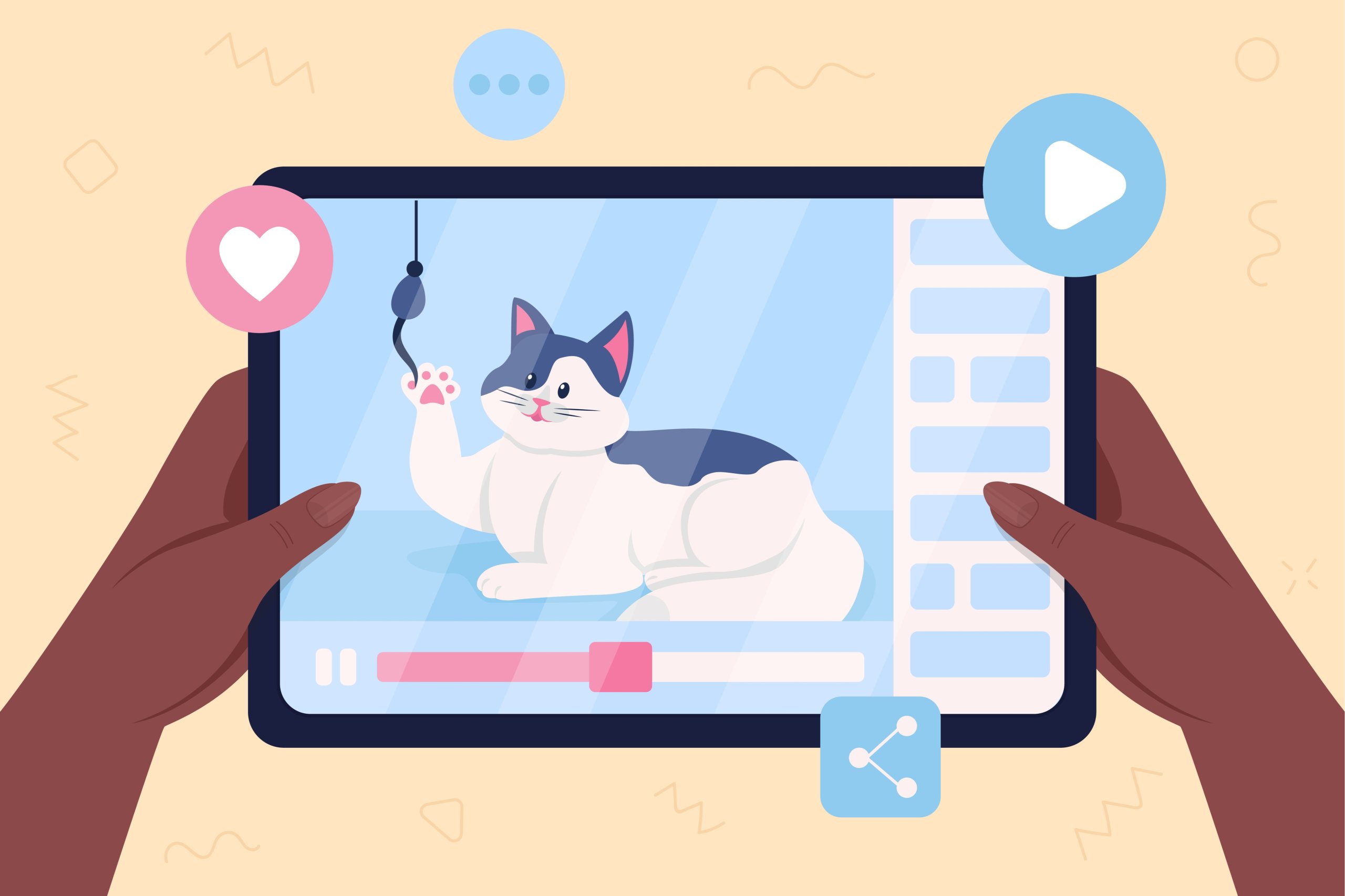
Regardless of your project goal and niche, you want to tell a powerful story that grabs your eyes and engages your viewers’ emotions and feelings. So, start strong, make your content helpful and relatable, and incorporate attention-grabbing visual effects, music clips, and audio.
Next, you need to optimize your videos for better visibility and discoverability. Create short, to-the-point videos, add relevant tags and captions, optimize your title, and create an eye-catching thumbnail to stir curiosity and grab your viewers’ attention.
Going Forward

Video advertising is the future of digital marketing. According to Statista, video ad spending in the U.S. is forecasted to grow to $53.9 billion in 2025. Video already dominates social media content, and as more brands create content and new ways to consume it, users will continue to grow.
With technology speeding up, artificial intelligence will become crucial in understanding where and how viewers are watching videos, offering marketers tangible insights. AI can help marketers identify target audiences, deliver tailored messages, and enhance engagement levels.
Virtual reality is also a fast-moving field that is already seeing explosive growth. From guided museum visits and virtual simulations of store environments to VR runaway shows, virtual reality is revolutionizing marketing.
In today’s fast-changing world, the future of video marketing certainly lies in innovation, technology, analytics, artificial intelligence, and adapting to dynamic markets and customer needs. Brands will need to adopt future-focused, technology-driven solutions while creating powerful, personalized, and relevant videos if they are to catapult their marketing efforts to the next level.
🔥 Tip: Hundreds of growing businesses use Socialfix to create their video marketing strategy and showcase their products and services. 













